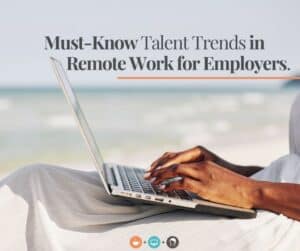Claiming Your Professional Worth as a Job Seeker

Job seekers often find themselves eager to jump at the first offer that comes their way. While the excitement of receiving a job offer can be overwhelming, it’s crucial for professionals to understand their worth and hold out for what they truly deserve. Recognizing your value is not just about salary; it’s about respecting your skills, experience, and potential contribution to a company.
Communicate Your Value in Interviews
Clear communication during interviews is crucial for job seekers to showcase their worth effectively. Begin by thoroughly researching the company and the specific role you’re applying for. This will help you tailor your responses to demonstrate how your expertise aligns with the company’s goals and addresses its challenges.
When discussing your experience, be specific and quantify your achievements. Instead of saying, “I improved sales,” state, “I increased sales by 20% within six months by implementing a new marketing strategy.” Such specific examples not only highlight your accomplishments but also position you as a results-oriented professional. This approach provides tangible evidence of your impact and value.
Highlight your problem-solving abilities, leadership skills, and any specialized knowledge that sets you apart from other candidates. For instance, you might mention how your proficiency in a particular software led to a streamlined workflow, saving the company significant time and resources. Additionally, practice active listening during the interview. Pay close attention to the questions asked and respond thoughtfully. This not only shows that you are engaged but also allows you to address the interviewer’s specific concerns and interests. Tailoring your responses to the interviewer’s needs can further underscore your suitability for the role.
Negotiate Confidently and Professionally
Preparation is key to successful negotiation. Before entering negotiations, research industry standards for the role and location, and consider your own needs and priorities. This information will empower you to negotiate from a position of knowledge and strength. When it comes to the negotiation itself, approach it as a professional dialogue rather than a confrontation. Express gratitude for the offer and enthusiasm for the role while being transparent about your expectations. For instance, you might say, “I am very excited about the opportunity to join your team. Based on my research and experience, I was expecting a salary closer to [desired amount]. Is there flexibility on this?” Being polite yet assertive can lead to more favorable outcomes and demonstrate your professionalism.
It’s also important to remember that negotiation isn’t just about salary. Consider other aspects of the offer that could be adjusted to better meet your needs. You might negotiate for additional vacation days, flexible working hours, remote work options, or professional development opportunities. These elements can enhance your overall job satisfaction and compensation package.
Additionally, practice your negotiation skills beforehand. Role-playing different scenarios with a friend or mentor can help you feel more confident and prepared during the actual negotiation. This practice can also help you anticipate potential counterarguments and formulate effective responses. Remember to stay calm and composed throughout the negotiation process. Emphasize your excitement about the role and your commitment to contributing to the company’s success.
Evaluate the Full Offer, Not Just the Salary
While salary is a significant part of any job offer, it isn’t the sole factor to consider when evaluating your professional worth. Take time to assess the full offer, including benefits, work-life balance, career advancement opportunities, and company culture. Benefits such as health insurance, retirement contributions, paid time off, and flexible working arrangements can substantially enhance your overall compensation package. Additionally, the potential for career growth within the company is crucial. A role offering mentorship, training, and advancement opportunities may outweigh a higher salary in a stagnant position. Evaluate how the company’s values and culture align with your own, as a supportive environment can significantly impact job satisfaction and performance.
Know When to Walk Away
Recognizing when an opportunity is not right for you is a crucial aspect of understanding your professional worth. Despite the allure of a job offer, if the position doesn’t meet your standards or align with your career goals, it’s important to consider walking away. It’s understandable that turning down a job can be daunting, especially if you’ve been searching for a while. However, accepting a role that doesn’t match your expectations can lead to long-term dissatisfaction and hinder your professional growth.
Evaluate the job offer comprehensively. If the company is unable or unwilling to meet your salary expectations, benefits needs, or other critical factors, it might not be the right fit. Trust your instincts; if something feels off during the negotiation or interview process, it probably is. Take note of any red flags, such as vague job descriptions, unprofessional behavior, or a lack of clear growth opportunities. These can be indicators that the company culture or the role itself may not be conducive to your success and satisfaction.
It’s essential to remain patient and persistent in your job search. Holding out for the right opportunity can ultimately lead to greater career fulfillment and success. Remember, every job should be a strategic step forward, not a compromise that stalls your career progression. By walking away from offers that don’t align with your worth and goals, you open yourself up to finding a role that truly fits your professional aspirations.
Need help working through your professional goals and how to communicate your worth to potential employers? Our HR experts are ready to help.









